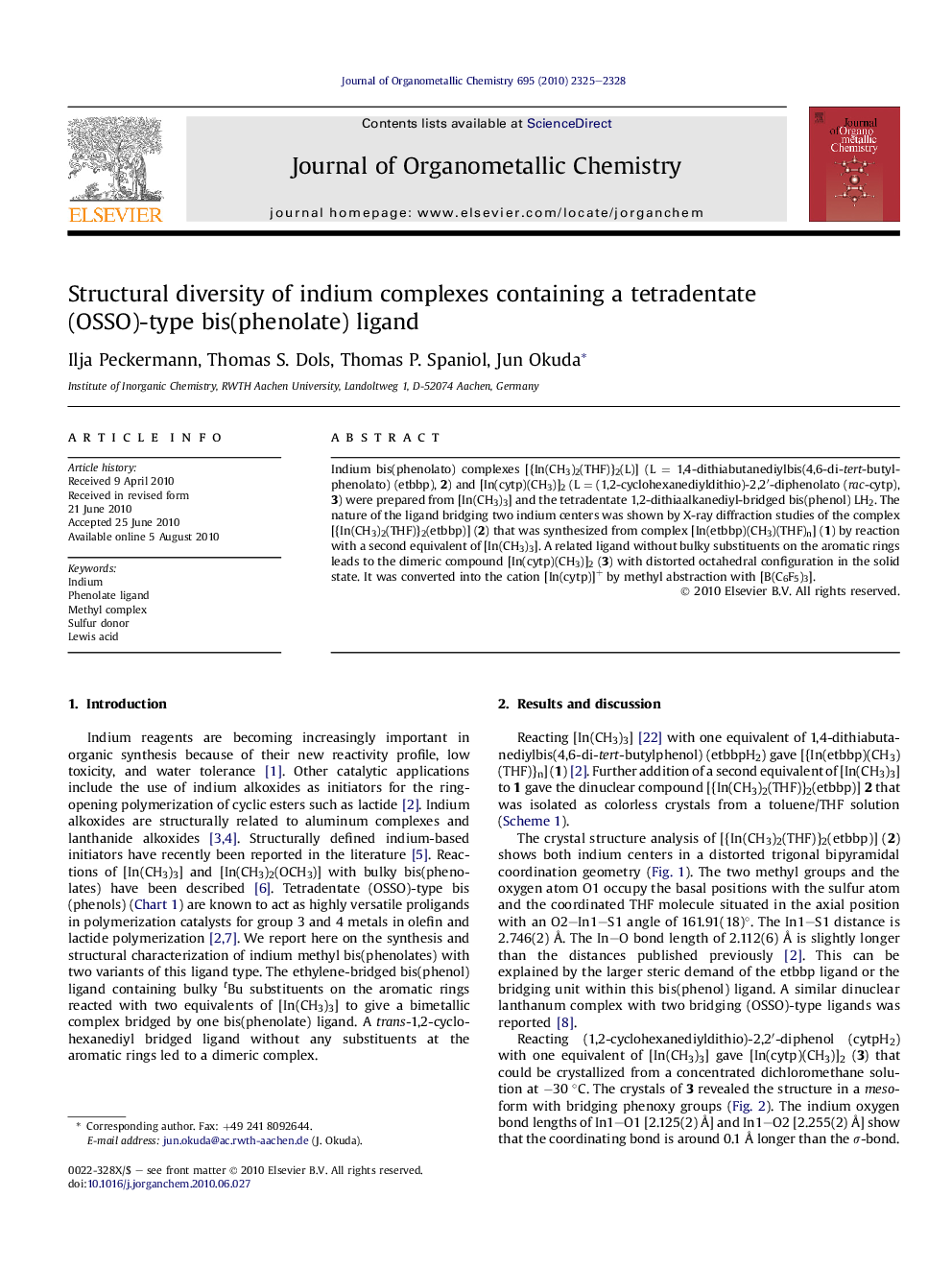| Article ID | Journal | Published Year | Pages | File Type |
|---|---|---|---|---|
| 1324996 | Journal of Organometallic Chemistry | 2010 | 4 Pages |
Indium bis(phenolato) complexes [{In(CH3)2(THF)}2(L)] (L = 1,4-dithiabutanediylbis(4,6-di-tert-butylphenolato) (etbbp), 2) and [In(cytp)(CH3)]2 (L = (1,2-cyclohexanediyldithio)-2,2′-diphenolato (rac-cytp), 3) were prepared from [In(CH3)3] and the tetradentate 1,2-dithiaalkanediyl-bridged bis(phenol) LH2. The nature of the ligand bridging two indium centers was shown by X-ray diffraction studies of the complex [{In(CH3)2(THF)}2(etbbp)] (2) that was synthesized from complex [In(etbbp)(CH3)(THF)n] (1) by reaction with a second equivalent of [In(CH3)3]. A related ligand without bulky substituents on the aromatic rings leads to the dimeric compound [In(cytp)(CH3)]2 (3) with distorted octahedral configuration in the solid state. It was converted into the cation [In(cytp)]+ by methyl abstraction with [B(C6F5)3].
Graphical abstractDinuclear indium bis(phenolato) complexes were prepared from [In(CH3)3] and tetradentate 1,2-dithiaalkanediyl-bridged bis(phenol). The nature of the ligand bridging the two indium centers was revealed by X-ray diffraction studies.Figure optionsDownload full-size imageDownload as PowerPoint slide
